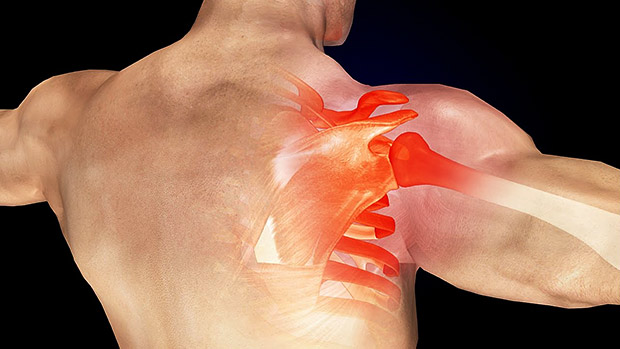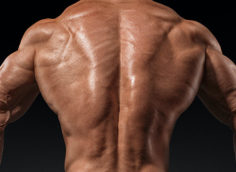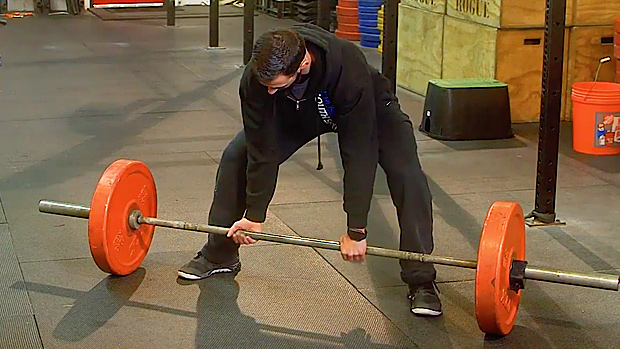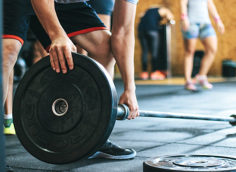Trainees are increasingly gravitating towards what I call hard effort training. Housewives and military-operators alike are embracing hard effort in an attempt to develop a superior state of general physical preparedness (GPP).
A nice byproduct of this type of training is improved body composition, making it easy to understand why it's so popular.
Keep in mind, when I say "hard effort," I'm not referring to high intensity interval training (HIIT). HIIT protocols are dependent upon intensity – but since intensity and volume have an inverse relationship, you can't train high intensity while also using high volume. Most hard effort workouts have a moderate to high amount of volume in place, naturally limiting intensity.
The hard effort approach is best described with the following equation: high impact + high volume = hard effort.
The hard effort paradigm shift can be attributed to increasingly busy lifestyles, shorter attention spans, and the need for instant gratification. To that end, it's no wonder that these short duration, hard-effort sessions have gained traction – they produce aesthetic results and, in some cases, performance gains.
This is a result of hard effort training's effect on the production of Testosterone and human growth hormone, a potent cocktail that aids in building muscle and reducing body fat. Plus, lets face it, it's more entertaining than walking on a treadmill.
Let's first put aesthetics aside and look at the performance end of the spectrum. Individuals who see massive performance gains while using hard effort training are often experiencing a novice training effect.
For example, a 42-year-old soccer mom may have an actual training age of 17. An athlete like this is ripe for the potent stimulus of "hard effort" and that's what leads her to huge performance jumps.
In this scenario, any stimulus would've lead to similar results, if applied liberally and regularly. It goes to show that these result don't necessarily prove hard efforts' efficacy with trained athletes.
My next point of contention is that hard effort trainees often claim to be training "cardio." Unfortunately, by training just with hard effort, these athletes are training everything except "cardio." They're throwing the proverbial baby out with the bathwater!
The main issue is that hard effort is primarily glycolytic, which leads to an energy imbalance when abused. This effect lies in direct opposition to the stated goal of developing a superior state of GPP, which is dependent upon energy system homeostasis.
A well rounded GPP athlete would be able to go long and slow or short and fast from a performance standpoint, which leads the biggest training flaw with hard efforts: a lack of purely oxidative aerobic training.
There's nothing wrong with training hard. In fact, most people need to train harder. However, it's important to recognize that chronic overuse of any type of training can have deleterious effects on mental and physical health.
Unceasing daily use of hard-effort training protocols may eventually result in an unbalanced energy system, systemic inflammation, adrenal problems, chronic tendonitis, and potentially serious orthopedic injuries.
These outcomes, coupled with the potential negative effects that chronic long-term inflammation (caused by anaerobic processes) has on our heart, is troubling. Unfortunately, there's very little data available to assess the long-term affects this type of training has on an aging population.
With this in mind, I err on the side of caution and encourage clients to use a hybrid approach, one that blends hard efforts with low to moderate intensity efforts. This creates a healthy, effective, and sustainable form of GPP.
Many use aerobic conditioning for body recomposition purposes. This makes sense, because when trained properly, the body burns fat for fuel, which helps improve aesthetics.
Steady state, low-intensity aerobic activity also acts as a powerful recovery tool. Aerobic efforts help the body process inflammation and leads to the release of restorative hormones (cortisone) that aid in connective tissue repair.
Unfortunately, there's a misunderstanding of what aerobic activity is and how we should train it. This confusion can be attributed to mainstream misinformation relating to how the body produces energy aerobically.
I see this type of confusion often with athletes who've been training their cardio with hard efforts. In this scenario, there's often a large deficiency in the athlete's ability to produce energy aerobically.
This deficiency lies in direct opposition to their goal of developing overall badassery. You can't be a well-rounded athlete if your aerobic energy system is garbage.
How do I know it's garbage? I test it!
The test requires you to run one mile. The tricky part is that you must keep your heart rate below your Maximum Aerobic Function (MAF) for the entire mile.
To determine your MAF score, simply subtract your age from 180 (example:180-37=143 BPM). If you're a highly trained athlete, you can add 3 BPM. If you're a de-conditioned athlete, subtract 3 BPM. This metric provides a baseline to continually monitor progress and physiological change.
Now that you've determined your MAF, strap on a heart rate monitor and go for a run. Remember, you can't allow your heart rate to exceed your MAF score. For many this will be a problem. Some of you may have to walk, some may crawl.
Regardless of your outcome, heart rate must be kept below your MAF score or the test is useless. If heart rate spikes, walk and let it drop below your MAF before starting the run.
Upon completion of your one-mile run or walk, review your time. If you can run the mile in seven minutes you've got a well-trained aerobic system. If your mile time was 13 minutes, your aerobic energy-system is poor.
So, what do you do if your aerobic energy pathway is junk? You train it!

Before addressing the specifics on how to train your aerobic energy system, let's take a quick look at how anaerobic and aerobic energy is produced.
Most are familiar with the anaerobic energy system. It's used to jump, sprint, and lift. The anaerobic energy system is limited in that it only produces 6-10 seconds of immediate energy using stored ATP and creatine phosphate.
On the other hand, the aerobic energy system is a powerful hybrid system that can produce energy virtually indefinitely. This system uses oxygen, glucose, and fat metabolism.
Think of the aerobic system as a million little hybrid engines (mitochondria) within our muscles. These hybrid engines are your fat burning engines and are highly efficient at producing energy. They run all day long on little added fuel (food). This phenomenon is primarily due to our ability to metabolize fat on the mitochondrial level.
Now let's look at the hard effort addict's training regimen. These athletes are simply training too hard to develop their hybrid engines. A true hard effort can only be sustained from 1 to 15 minutes when an athlete is above their anaerobic threshold.
This type of hard effort training primarily uses the glycolytic anaerobic system, where muscle glycogen and lactate is used to produce fuel. An unfortunate byproduct of this type of exercise is the accumulation of hydrogen ionic waste, which leads to toxic acidosis and the systemic micro trauma of tissues.
These failures cause cellular damage (DOMS anyone?) making it extremely difficult to recover from the anaerobic training stimulus, possibly costing the athlete a valuable training session. This activity is really sub-maximal when we consider glycolytic energy production only produces two ATP per each molecule of glucose.(1)
This leads back to my original point: the hard effort crowd is not training their fat-burning engines. Their daily efforts are constantly using and replenishing the easily accessed glycogen stores and blood glucose, not fat.
This is a problem because when our blood glucose levels drop, we crash. The human body senses an overwhelming fatigue and begins attempting to top off the tank by shunting blood from the gut to our limbs, often leading to unpleasant side effects like vomiting. This is one of the many unhealthy aspects of hard-effort training.
The hard-effort addiction to glycogen is problematic from both a health and performance standpoint. I experimented with this type of training in preparation for an ultra-marathon event. Without a properly trained oxidative system, I was unable to tap into my fat stores for fuel when I needed it. This led to a dependence on food just to maintain the glycogen I needed for energy production – not a good thing when you're in the middle of the woods, 30 miles from the nearest convenience store.
However, had I just lowered my pace a bit, I'd be in an oxygen-using zone where I could produce 36-38 ATP per molecule of glucose. This would've been more efficient because the body can store enough glycogen and blood glucose to produce approximately 90 minutes of activity. The problem was that 90 minutes didn't cut it as I was on the trail for over six hours.
Now, if I'd taken it one step further and slowed down even more, I'd have been training below my MAF, and could've developed the mitochondrial machinery needed to break down fat into energy. Had I taken this approach, my energy production efficiency would've jumped exponentially to 460 ATP per fat molecule!
In this example, hard effort training caused me to miss out on two thirds of my potential energy production. This outcome stands in direct conflict to what Yuri Verkoshansky's defined as GPP: "The general ability of the body as a machine to produce work of different intensity and duration using the appropriate energy system of the body."
In my work with the military, I've been asked to prepare soldiers for a "worst day scenario." This request led me to my own question: What if the "worst day" is three days long?
This forced me to address the inherent weaknesses present in most GPP plans, leading me to embrace a more balanced approach to GPP-style training.
The system I use with clients is called Homeostatic Performance Training (HPT). The HPT approach is a blend of periodization techniques, dedicated strength, power elements, and energy system training. It's a complicated but effective system, one heavily influenced by Supertraining.
HPT uses a two-part approach to develop multi-modal anaerobic and aerobic conditioning. This is intended to achieve an optimal training effect while mitigating the negative byproducts and training scars associated with either glycolytic or oxidative training. Achieving a homeostatic balance is the ultimate objective in my system.
The first step in the HPT approach is establishing your baseline oxidative energy system using the MAF formula discussed earlier. The 180-age formula should be used while training the aerobic energy system.
For you folks with fitness ADD, you can still use kettlebells, barbell complexes, plyometrics, and gymnastics when training this system.
However, load, volume, and rep schemes may need to be manipulated to keep your heart rate under your MAF benchmark. I like to maintain a balance in clients' prescribed high intensity (glycolytic) and low/moderate intensity (oxidative) work. The minimum homeostatic work ratio of 1:1 is required to prevent injury, maintain health, and ensure client progress.
If a trainee has difficulty recovering due to an inordinate amount of stress outside the gym and/or has difficulty managing training stress, this ratio may increase.
For example, if a client is over 35 years of age, has nervous tension and a poorly trained oxidative pathway (1 mile @ 180-age = 10:00+.), the ratio can be increased from 1:1 to 1:2.
These ratios are calculated on a weekly basis dependent upon total training volume.
The first integer in the ratios relates to the cumulative time a trainee spends training hard efforts each week (excluding dedicated strength training).
Hard effort workouts are powerful stressors that cause systemic disruption on a cellular level. These disruptions can be managed by offsetting these hard efforts with MAF based-active rest and recovery workouts.
MAF type workouts are best used as active recovery the day after a hard effort. Part of the effectiveness of this type of training is in its ability to mitigate the effects of hard effort training, which allows trainees to train more frequently.
Some of the MAF workouts I use look like this:
Mousetrap 2.0
30-60 minute max rounds:
- 1 Barbell complex of:
- 5 Stiff leg deadlifts
- 5 Bent over rows
- 5 Power cleans
- 5 Front squats
- 5 Push presses
- 5 Sandbag get-ups
- .5 mile Airdyne
The weights on this workout are subjective due to your level of aerobic conditioning. I used 65 pounds on the barbell complex and a 60-pound sandbag – 40 minutes was more than enough for me!
Patient Zero
30-60 minute max rounds
- 4 Prowler pushes
- 8 Kettlebell swings
- 12 Sit-ups
- 24 Step-ups
Thai Hooker and a Bag of Dope (Not that I condone either)
30-60 minute max rounds:
- Barbell complex of:
- 4 Romanian deadlift
- 4 Squat clean
- 4 Press
- 4 Walks
- One walk = a power clean with an 80-pound sandbag, place it on a shoulder, and pick up a 55-pound dumbbell in the other hand. Now walk 45 feet and drop the sand bag and place the dumbbell on the deck. Repeat on opposite shoulder and hand.
- 4 Strict pull-ups
- Row 500m
These sessions are a shadowy reflection of many of the hard effort programs out there today. However, the methodology here is novel due to the scientific methods used to determine exactly what we're training at a given time.
This element is what separates HPT from all other run of the mill programs. I've experienced a much higher client compliance rate and zero serious injuries since implementing these procedures. This has led to overall performance gains that have been superior to the stand-alone hard effort training programs previously used.
While this is only one facet of the HPT program, it could provide you with a powerful tool to combat overtraining, coupled with potential improvements in cardiorespiratory endurance.
At the very least it should help some athletes manage their training volume and intensity in a healthy and sustainable fashion.
- Eberle, Suzanne Girard, Endurance Sports Nutrition, Second Edition.





